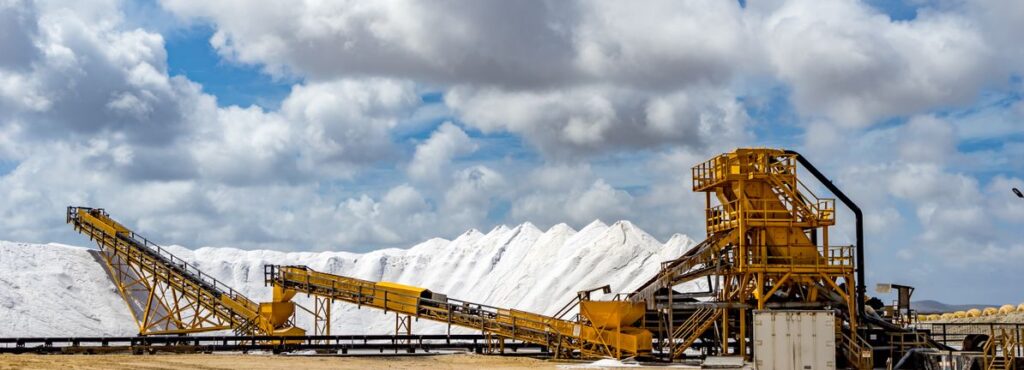Just because a company isn’t making a profit doesn’t mean its stock price will fall. For example, Amazon.com lost money for many years after it went public, but if you bought and held its shares since 1999, you would have made a lot of money. That said, companies that aren’t making profits are risky because they could burn through all their cash and run into financial difficulties.
So a natural question for Richmond Vanadium Technology (ASX:RVT) shareholders is whether they should be concerned about the company’s cash burn rate. For the purpose of this article, we define cash burn as the amount of cash a company is spending each year to fund growth (also known as negative free cash flow). Let’s start by looking at how that compares to the company’s cash burn.
View our latest analysis for Richmond Vanadium Technology
When will Richmond Vanadium Technology run out of cash?
A cash runway is defined as the length of time it would take a company to run out of funds if it kept spending at its current cash burn rate. As of December 2023, Richmond Vanadium Technology had cash of AU$16m and no debt. Looking back at last year, the company burned through AU$4.7m, which means its cash runway was about 3.3 years as of December 2023. With a runway this long, a company can get the time and space it needs to expand its operations. Importantly, if we extrapolate the recent cash burn trend, the cash runway would be significantly longer. You can see how its cash balance has changed over time in the image below.
Debt, capital and history analysis
How has Richmond Vanadium Technology’s cash burn changed over time?
Richmond Vanadium Technology recorded statutory revenues of A$604k last year, but no operating revenues. For us, this is a pre-revenue company, so we look at the cash burn trajectory to assess the cash burn situation. A steep cash burn of 145% year-on-year certainly tests our nerves. Generally speaking, such a rate of expenditure growth cannot continue for long before it causes balance sheet weakening. Richmond Vanadium Technology is a bit worrying as its operating revenues are not sufficient. We like most of the stocks on this list of stocks with analyst expectations for growth.
How easily can Richmond Vanadium Technology raise capital?
Richmond Vanadium Technology certainly has a stable cash runway, but the trajectory of its cash burn may have some shareholders anticipating when the company will need to raise more capital. The most common ways for public companies to fund their operations are by issuing new shares or borrowing. One of the main advantages that public companies have is that they can sell shares to investors to raise cash to fund growth. Looking at a company’s cash burn relative to its market capitalization can give us an idea of how much dilution shareholders would face if the company needed to raise enough cash to cover its cash burn over the next year.
The story continues
Richmond Vanadium Technology’s cash burn was A$4.7m, which is roughly 7.0% of its market capitalization of A$68m. This is a fairly small percentage, so it would be very easy for the company to fund its growth over the next year by issuing new shares to investors or taking out a loan.
Are you worried about Richmond Vanadium Technology’s cash burn?
You may already know that we’re relatively comfortable with Richmond Vanadium Technology’s cash burn. In particular, we think the cash runway stands out as evidence that the company has good control over its spending. While the rising cash burn is somewhat worrying, the other factors mentioned in this article give us a lot of comfort with regards to the cash burn. Taking into account all the factors discussed in this article, we’re not too worried about the company’s cash burn, but we think shareholders should keep an eye on how it plays out. Apart from that, we looked into the various risks affecting the company and found 4 warning signs for Richmond Vanadium Technology (of which 3 are worrying!) you should be aware of.
If you’d prefer to check out other companies with even better fundamentals, then do not miss this free list of interesting companies that have high return on equity and low debt, or this list of stocks with forecast growth.
Have something to say about this article? Do you have any questions about the content? Contact us directly or email us at editorial-team (at) simplywallst.com.
This article by Simply Wall St is of general nature. We provide commentary based on historical data and analyst forecasts using only unbiased methodology, and our articles are not intended as financial advice. It is not a recommendation to buy or sell a stock, and does not take into account your objectives or financial situation. We aim to provide long-term analysis driven by fundamental data. Please note that our analysis may not take into account the latest price-sensitive company announcements or qualitative material. Simply Wall St has no position in any of the stocks mentioned herein.
Have something to say about this article? If you have any questions about the content, please contact us directly or email us at editorial-team@simplywallst.com.

